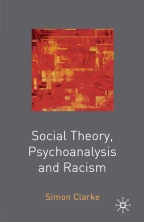
Projective identification is for Klein (1946) a crucial mechanism of defence. As we have seen in Chapters 5 and 6, projection per se is a relatively straightforward mechanism in which unpalatable impulses, feelings and parts of the self are projected out and onto others. In other words, we project onto the world experiences and qualities that are part of ourselves as if they are part of someone else. Hence we have Freud’s notion of the uncanny: ‘what appears repellently alien is in fact all too familiar’. Klein’s notion of projective identification, however, differs significantly and it is important to differentiate between the terminology at the onset. As I have argued, Horkheimer and Adorno’s use of projection in explanation of anti-Semitism provides us with a useful insight into the psychodynamic processes that underpin racism and ethnic hatred. What Horkheimer and Adorno fail to explain is the way in which the recipient of the projection is made to feel, for example, inferior. This is a useful way of differentiating between projection and projective identification. Whereas projection is a relatively straightforward process in which we attribute our own affective state to others, for example we may feel depressed and view our colleagues in the workplace as being miserable, or blame others for our mistakes. Projective identification involves a deep split, a ridding of unpalatable parts of the self into rather than onto, someone else.
The drive to project (expel) badness is increased by the fear of internal persecutors. When projection is dominated by persecutory fear, the object into whom badness (the bad self) has been projected becomes the persecutor par excellence. The re-introjection of this object reinforces acutely the fear of internal and external persecutors … an interaction in which the processes involved in projective identification play a vital part.
(Klein, 1952b: 69)
This is a preview of subscription content, log in via an institution to check access.